We have experienced a huge bull market this year but any pundits are calling for the bullish move to end in a sharp downward correction…The bears have a case, historically and cyclically, but I am going to go out on a limb and say things are really different this time. Here are 5 reasons why.
bullish move to end in a sharp downward correction…The bears have a case, historically and cyclically, but I am going to go out on a limb and say things are really different this time. Here are 5 reasons why.
So writes David Goodboy (beta.streetauthority.com) in edited excerpts from his original article* entitled 5 Reasons This Bull Market Won’t End This Year.
[The following article is presented by Lorimer Wilson, editor of www.munKNEE.com and the FREE Market Intelligence Report newsletter (sample here – register here) and may have been edited ([ ]), abridged (…) and/or reformatted (some sub-titles and bold/italics emphases) for the sake of clarity and brevity to ensure a fast and easy read. This paragraph must be included in any article re-posting to avoid copyright infringement.]
Goodboy goes on to say in further edited, and perhaps in some places paraphrased, excerpts:
Based on my research, there will not be a sharp pullback this autumn in the U.S. stock market. The selling has already happened, and I expect upside for the rest of the year. While this upside may be lackluster, I am convinced any additional downside will be quickly bought, thus preventing any steep declines.
Automatically receive our easy-to-read articles as they get posted!
Sign up for your FREE bi-weekly Market Intelligence Report (sample)
“Follow the munKNEE” daily posts via Twitter or Facebook
Set up an RSS feed: It’s easy – here’s how
Here’s why things are different this time:
1. Monetary policy will remain accommodative for some time
This year’s rally has been driven by accommodative monetary policy. Every dip like the one we experienced this month has been triggered by fears that the Federal Reserve may be changing its stance.
Fed Chairman Ben Bernanke has warned that “the premature removal of accommodation could, by slowing the economy, perversely serve to extend the period of long-term rates” [which] makes it clear the Fed will likely continue with its quantitative easing bond purchases into next year.
The recent drop in stock prices has put fear into the minds of the members of the Fed’s Federal Open Market Committee, and I expect they will err on the side of caution with their rhetoric and action until at least the end of the year.
2. P/E metrics don’t indicate an overvaluation of the S&P 500 index
Let’s look at two common metrics.
- The trailing price-to-earnings (P/E) ratio for the S&P 500 is currently 16.1, compared with a historical average of 19.3 since 1960.
- The trailing price-to-earnings/growth (or PEG) ratio has averaged 1.6 since 1960 — but now stands at 1.3.
Neither of the above metrics indicates the S&P has become overheated.
3. The technical picture remains bullish
Using the S&P 500 as a proxy for the overall technical health of the U.S. stock market reveals the bull move is far from over.
- The cash index remains over 100 points above the upward sloping 200-day simple moving average, which is at 1,560,
- The 50-day simple moving average has provided price support for 2013 and has prevented the most recent selling from becoming hazardous to the bullish case. (click to enlarge)
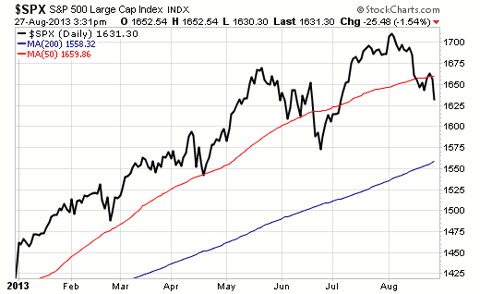
4. Europe has turned the corner
The European Central Bank has said it will do whatever it takes to prevent another economic crisis in the region and this has led to waves of positive sentiment sweeping the eurozone, lifting stock prices and providing clear signs that Europe’s economy has turned the corner….
We live in an economically connected world and the continuing good news from Europe can only help to support the U.S. stock market.
5. China’s showing improvement
China is the engine for the world’s economic growth and recent fears of a dramatic slowdown in the world’s second-largest economy have been greatly exaggerated. Despite slight signals of slowing, the economy remains stable and on track to hit the government’s targeted 7.5% GDP growth rate this year.
Conclusion
The above 5 factors combine to paint a bullish picture throughout the end of 2013. While we may not see dramatic upside, a sharp decline is also unlikely. Things really are going to be “different this time”…
[Editor’s Note: The author’s views and conclusions in the above article are unaltered and no personal comments have been included to maintain the integrity of the original post. Furthermore, the views, conclusions and any recommendations offered in this article are not to be construed as an endorsement of such by the editor.]
*http://beta.streetauthority.com/investing-basics/5-reasons-bull-market-wont-end-year-477571 (Copyright 2001-2013. StreetAuthority, LLC All Rights Reserved. Go here to subscribe to our FREE newsletter.)
Related Articles:
1. Stock Markets Look Ripe For a MAJOR Correction – Here’s Why
Divergences between fundamentals, confidence and the valuation of markets are large and, as such, cannot last for long. The only question is how – and how quickly – this correction occurs. Read More »
The belief is that rising interest rates (as is currently occurring) are a sign that the economy is improving as activity is pushing borrowing rates higher. In turn, as investors, this bodes well for corporate profitability which supports the current valuations of stocks in the market. While this seems completely logical the question is whether, or not, this is really the case? Read More »
3. Stock Market to Continue Onwards & UPwards – Here’s Why
Too often investors focus on the negative, lose confidence in stocks and, as a result, they can miss great bull markets. I believe when it comes to finding investment opportunities it’s all about both monetary and fiscal policy. As such, I encouraged investors to follow the money. With that in mind, here are two of my favorite charts that I believe demonstrate how investors can do exactly that. Read More »
4. Stock Market (Dow) Should Reach 20,000 By 2018 – Here’s Why
With the stock market up over 20% since we forecast in July, 2012 that we would see the Dow at 20,000…[by the end of the] decade, our forecast seems less ambitious than back then. US stocks are not overpriced or overleveraged, and remain more attractive than at prior peaks. As such, based on current conditions, we now project that…the Dow will reach 20,000 by late 2018. Read More »
5. Don’t Worry About the Threat of Higher Interest Rates Hurting Stocks – Here’s Why
History clearly shows that stocks don’t fall during periods of rising interest rates. Sure, they might fall a little when a rate hike is announced – maybe for a week or so – but they usually bounce back quickly – and then they go higher. Read More »
6. We Think the Prognosis for Stocks Looks Good – Here’s Why
Stocks have generally performed very well in rising-rate environments but the current rate cycle is unlike any other of the past 40 years, keeping investors on edge. A lot will depend on how inflation behaves. Read More »
7. Current Stock Market High Is NOT a Bearish Signal – Here’s Why
The Dow has begun a major rally 13 times over the past 112 years which equates to an average of one rally every 8.6 years so, as it stands right now, the current Dow rally that began in March 2009 would be classified as well below average in both duration and magnitude. Read More »
8. Correlation of Margin Debt to GDP Suggests Stock Market Has More Room to Run
Are stocks in a bubble? While leverage has returned to the stock market driving up stock prices and aggregate demand in the process, margin debt is still shy of its all-time high as a percentage of GDP, so there is certainly some headroom for further rises. A look at the following 5 charts illustrate that contention quite clearly. Read More »
9. The Stock Market: There’s NOTHING to Be Bearish About – Take a Look
There’s nothing to be bearish about regarding the stock market these days. I’ve reviewed my 9 point “Bear Market Checklist” of indicators and it is a perfect 0-for-9. Not even one indicator on the list is even close to flashing a warning sign so pop a pill and relax. There’s no immediate danger threatening stocks. Read More »
10. Pop a Pill & Relax ! There’s NO Immediate Danger Threatening Stocks
Right now there’s nothing to be bearish about. I say that with conviction, because my “Bear Market Checklist” is a perfect 0-for-9. Heck, not a single indicator on the list is even close to flashing a warning sign. We’ve got nothing but big whiffers! Take a look. Pop a pill and relax. There’s no immediate danger threatening stocks. Read More »
11. Latest Action Suggests Stock Market Beginning a New Long-term Bull Market – Here’s Why
There are several fundamental reasons to believe that this week’s stock market activity, where the S&P 500 has moved more than 4% above the 13-year trading range defined by the 2000 and 2007 highs, could mark the beginning of a long-term bull market and the end of the range-bound trading that has lasted for 13 years. Read More »
12. Sorry Bears – The Facts Show That the U.S. Recovery Is Legit – Here’s Why
Today, I’m dishing on the unbelievable rebound in residential real estate, pesky rumors about the dollar’s demise and a resurgent U.S. stock market. So let’s get to it. Read More »
13. Stocks Are NOT In Another Bubble – Here’s Why
U.S. stocks are off to one of their best starts in years. Most indices are up 10% year to date, prompting many investors to ask: “Are we in another bubble?” The answer is no, at least when it comes to equities. Here are three reasons why:
14. Research Says Stock Market Bull Should Continue Its Run Until…
The mainstream financial press would like us to believe that because the S&P 500 and Dow 30 are at or near their record highs that it must mean we’re nearing the end of the current bull market and, as such, now must be a terrible time to buy stocks. Let’s not jump to any conclusions, though. Instead, let’s do our own due diligence to find out. Hint: If you’ve been stuffing cash under the mattress since the last market crash, you might want to finally go deposit it in your brokerage account. Here’s why… Words: 420
15. These 4 Indicators Say “No Stock Market Correction Coming – Yet”
While I remain cautious on stocks and the risk trade, the technical picture shows that the uptrend to be intact and the bulls should still be given the benefit of the doubt for now. At this point, any call for a correction is at best conjecture [as evidenced by the following 4 indicators]. Words: 399; Charts: 4
The Swimsuit Issue Indicator says that U.S. equity markets perform better in years when an American appears on the cover of Sports Illustrated’s annual issue as opposed to years when a non-American appears on the cover. [What is the nationality of this year’s cover model? Can we expect returns above the norm or will we see a year of underperformance for the S&P 500 this year? Read on.] Words: 323 ; Table: 1
17. Bull Market in Stocks Isn’t About to End Anytime Soon! Here’s Why
As we all know, money printing always leads to inflation. It’s just a matter of figuring out which assets get inflated. This time around gold is not the only beneficiary, stocks are, too, and I’m convinced that the chart below holds the key to the end of the bull market. Words: 475; Charts: 1
18. QE Could Drive S&P 500 UP 25% in 2013 & UP Another 28% in 2014 – Here’s Why
Ever since the Dow broke the 14,000 mark and the S&P broke the 1,500 mark, even in the face of a shrinking GDP print, a lot of investors and commentators have been anxious. Some are proclaiming a rocket ride to the moon as bond money now rotates into stocks….[while] others are ringing the warning bell that this may be the beginning of the end, and a correction is likely coming. I find it a bit surprising, however, that no one is talking of the single largest driver for stocks in the past 4 years – massive monetary base expansion by the Fed. (This article does just that and concludes that the S&P 500 could well see a year end number of 1872 (+25%) and, realistically, another 28% increase in 2014 to 2387 which would represent a 60% increase from today’s level.) Words: 600; Charts: 3
19. 5 Reasons To Be Positive On Equities
For the month of January, U.S. stocks experienced the best month in more than two decades [and the Dow hit 14,009 on Feb. 1st for the first time since 2007]. Per the Stock Traders’ Almanac market indicator, the “January Barometer,” the performance of the S&P 500 Index in the first month of the year dictates where stock prices will head for the year. Let’s hope so…. [This article identifies f more solid reasons why equities should do well in 2013.] Words: 453
20. Start Investing In Equities – Your Future Self May Thank You. Here’s Why
As Winston Churchill once said: “A pessimist sees the difficulty in every opportunity; an optimist sees the opportunity in every difficulty” and in that vain I challenge all readers to fight off the negativity, see long-term opportunity in global equity markets and, most importantly, remain invested. Your future self may thank you. Words: 732; Charts: 6
21. Harry Dent Sees Dow 3,000; Seth Masters Sees Dow 20,000! Who’s Most Likely Right?
Harry Dent, the financial newsletter writer and CEO of economic forecasting firm HS Dent, has one of the most bearish calls on stocks we’ve heard in a while. Appearing on CNBC yesterday, Dent explained the demographics-driven thesis behind his Dow 3000 call. Read More »
22. Dow 20,000 (and 2,000 for the S&P 500) Likely Within 5-10 Years! Here’s Why
A new position paper by Seth J. Masters, chief investment officer of Bernstein Global Wealth Management, entitled “The Case for the 20,000 Dow” is startling. Masters maintains that the odds Dow will rise by more than 7,000 points – an increase of more than 50% – by the end of this decade are excellent. [Below is his argument for such a lofty expectation.] Words: 715 Read More »
23. Why the Dow Could Hit 20,000 by 2014
To move up from the current 12,600 level to 20,000 by the summer of 2014, the Dow would need to rise about 16.5% each year or about 58% in a three-year period and in the past 25 years the Dow has risen by this much on at least 13 occasions. During those times, there was only one period of sustained annual gains, when the Dow rose an average of 26% from 1995 through 1999. The key question: what would it take to justify a three-year, steady, robust gain? It all comes down to corporate profits [and the extent to which] multiple investors are willing to assign [dollars] to these profits. [Let me explain.] Words: 761
24. Dow 20,000: the Latest in Hype, Happy Talk and Irrational Exuberance
Hot headlines about the Dow “storming back soon,” soaring to the “Next Stop, Dow 20,000” is nothing more than a new cycle of irrational exuberance. After losing an inflation-adjusted 20% the last decade, a prediction that the Dow will roar back 80% anytime soon is misleading, pure speculative hype. Reminds me of book titles like “Dow 36,000” and “Dow 100,000” back in 1999 – and memories of those mutual funds selling with absurd multiples over 40, with annual returns in excess of 100%. Worse than the tulip-bulb mania of the 1590s. What’s really roaring back is hype, happy talk and irrational exuberance. Words: 531
25. Could Dow 20,000 be Just Around the Corner?
Most first quarter 2011 earnings reports are in and…over three-quarters exceeded expectations… [with] results showing a desirable combination of growing revenues, profitability and cash flow … [As such,] today’s stock market valuations are conservative compared to typical bull markets accompanied by investor enthusiasm. In the past, using 2011′s estimated earnings, the average P/E ratio could easily be 15 and…that would put the Dow Jones Industrial Average (DJIA) at 15,000 today – about 20% above today’s level. [Were we to] add in high optimism like the kind we’ve seen in other investments recently, a 20 P/E ratio would be possible – and the DJIA would be 20,000 – 60% higher [than it is today! Let’s take a look at the possibility.] Words: 540
26. Jeremy Siegel: 50% Chance of Dow Reaching 17,500 By The End Of 2013! Here’s Why
Last month, Wharton Professor Jeremy Siegel boldly claimed that there was a 70% chance that the DOW could reach 15,000 this year [and that] there’s a 50% chance that it could reach 17,500 by the end of 2013. [Here are his reasons]. Words: 291
 munKNEE.com Your Key to Making Money
munKNEE.com Your Key to Making Money
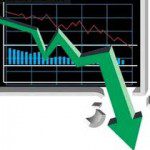
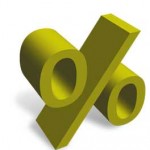







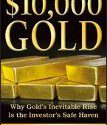
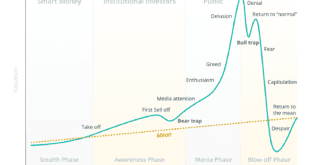
The Fed (and the Central Banks globally) are now juggling too many balls while at the same time they are not paying attention to what is happening to the middle class, (which is shrinking in size thanks to the monetary policies of the Big Banks). As the middle class shrinks, the very foundation of our economy is trembling which is going to result in the Fed dropping balls. Once the first one drops, others will follow and then things will get ugly fast, as electronic trading will enable a cascade (dare I say crash) in falling stock prices, since the biggest traders will be the first to jump ship by selling short leaving all the little people to sink or swim for themselves!
This is why I see the value of PM’s not only returning to previous highs but rocketing upward to new record levels as stock investors rush toward the financial stabilization that PM’s provide over the long term.